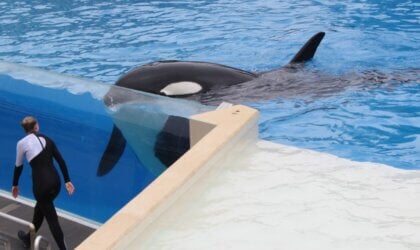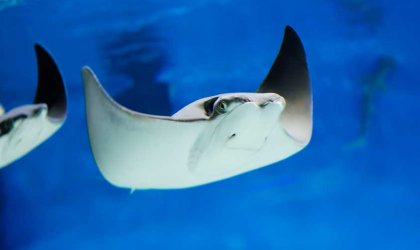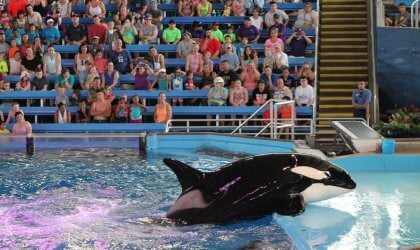Takara, an orca exploited at SeaWorld, turns 31 on July 9. I’m also celebrating with 31 candles this month—but our lives couldn’t be more different.

Takara with one of her calves
As a child, I wore “Shamu” T-shirts, snuggled with my stuffed orca, and buried my nose in books about marine animals. When I was 4 years old, my family took a vacation to SeaWorld San Diego to see orcas in person. I remember the blazing California sun, the roaring crowd, and the stunning black-and-white orcas—completely unaware that our tickets directly supported their suffering.

Many well-meaning people who care about animals still don’t know the truth about SeaWorld. Orcas are social, emotional, and complex animals who love to travel long distances with their families. But at SeaWorld, they’re limited to small, concrete tanks, performing meaningless tricks for food and swimming in endless circles.
Takara and I were born on opposite coasts and had very different childhoods. She was born into confinement in a tiny tank, whereas I was born into freedom. When I entered the world, the doctor gave me to my mother, who took my little hand and guided me through all stages of life. But Takara was torn away from her mother at just 12 years old—even though, in nature, orcas often live with their mothers for life—and shipped from marine park to marine park.
Takara’s mother, Kasatka, died in 2017. More than 40 orcas confined at SeaWorld’s parks have died—many far short of their natural life expectancy—and from causes such as bacterial infections and even fractured skulls. Takara became a mother herself, having been bred and forced to give birth many times so that SeaWorld could exploit her offspring, too. Her first two babies were taken from her: Her daughter Kohana was moved to Loro Parque in Spain, and her son Trua lives at SeaWorld Orlando in Florida. And just when Takara was starting to form a relationship with her daughter Kyara, the infant died at just 3 months old.
Dolphins and orcas at @SeaWorld are #quarantined to tiny concrete tanks for their entire lives 🐬💔
I challenge @radioplayed and @Highwaisteddd to take the @peta #SeaWorldBathtubChallenge with me! #SeaWorldSucks pic.twitter.com/DrS1TeofkI
— Melanie Elizabeth 🐈 (@MelanieEJ3) April 13, 2020
When my hair turns silver, I hope to retire somewhere warm where I can wear comfortable clothes and wide-brimmed hats. I’ll spend time with my family and start my own garden. I sincerely hope Takara will soon be able to retire to a seaside sanctuary, where she could experience what it truly means to be an orca. I also hope anyone reading these words will boycott SeaWorld’s abusement parks, just as I do.
Melanie Johnson is PETA’s manager of animals in entertainment campaign. She has led the efforts to get SeaWorld to stop making trainers stand on dolphins’ faces and ride on their backs in demeaning circus-style shows, and her team has pushed dozens of companies like Expedia to stop promoting the abusement park.
Despite ending its sordid orca-breeding program in 2016, SeaWorld still sexually abuses and forcibly impregnates other dolphins and whales for profit. The animals still imprisoned at SeaWorld languish in their small, concrete prisons, subjected to abuse and a lifetime of deprivation.
We have a lot of work left to do, and we need you to be a part of it. Help us by telling SeaWorld to release its prisoners to seaside sanctuaries where they can live with purpose and to help ensure a future in which no animal suffers as Takara does.




